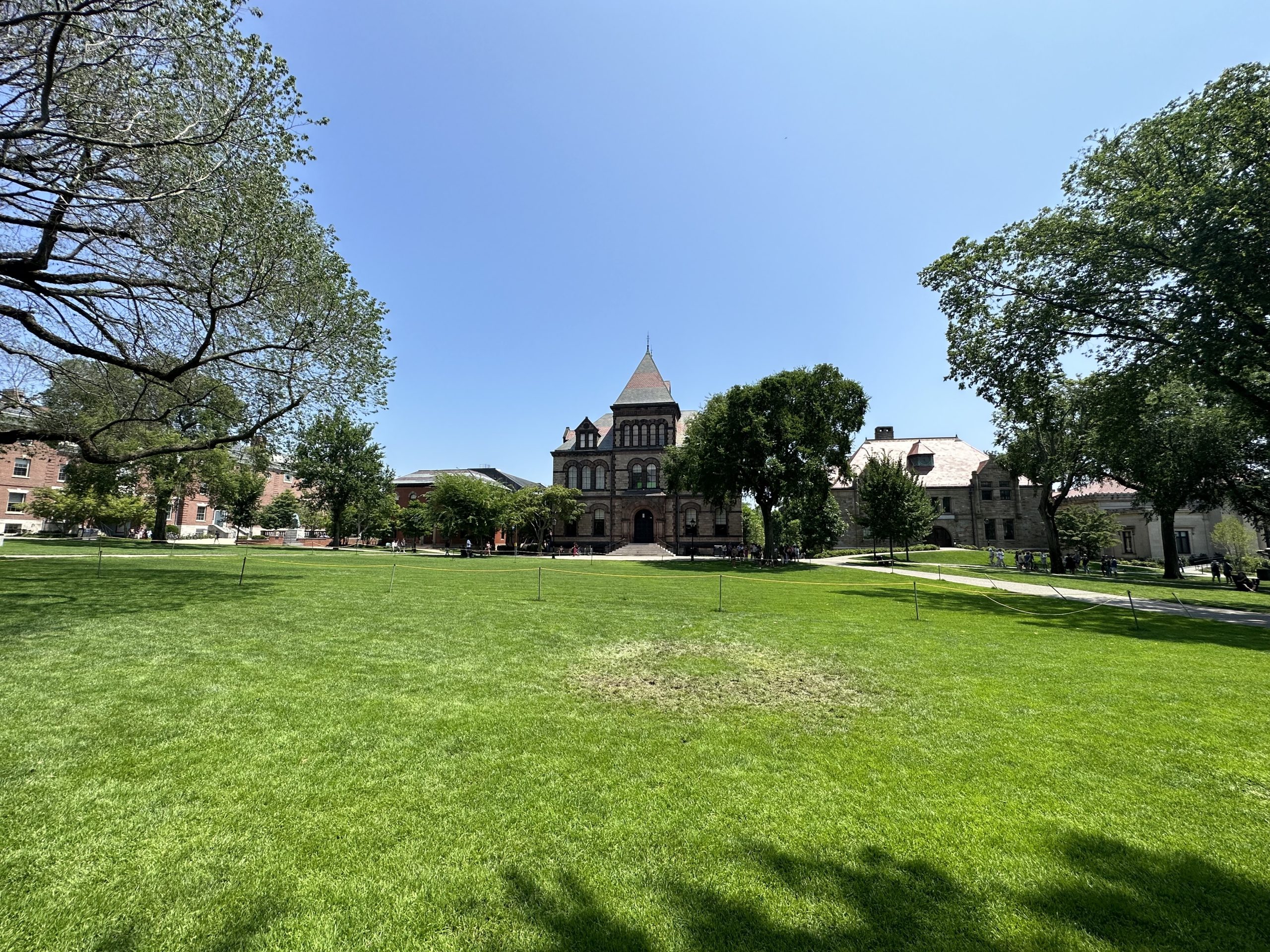Driving through Providence, Rhode Island, I marveled at the age-old red buildings and quiet streets half-shaded by trees. Downtown, college students dressed in casual fashion loitered around coffee shops and restaurants that served acai bowls, smoothies, sushi, Italian gourmet, and Chinese tea. It was a refreshing place for a refreshing university – Brown University.

Often cited as the most quirky, liberal, and humble Ivy League University, Brown is stereotypically a school for writers, thinkers, and artists despite its arguably strong STEM, medicine, laws, and finance majors. What really makes Brown unique, however, is its open curriculum and A to C grading system. Open curriculum is practiced entirely or partially by several other liberal arts colleges and universities, such as Amherst College, Hamilton College, and Tufts University, but Brown is the only ivy league university that does it completely.
Open curriculum is when students aren’t required to fulfill certain class distributions such as math, social science, natural science, and language. In simpler words, you can only take classes you like and drop any you hate. People in your class actually want to be there and so do the professors. Brown’s grading system is also conducive to collaboration and frowns upon unhealthy competition. Students are never graded on a curve, and there is no such thing as an A+ or A-, only A, B, and C. Suddenly the weight of grading perfection is lifted off of an ivy league student’s shoulders.

Brown has around 6,000 undergraduate students and 2,000 graduate students, so professors are more than happy to offer undergraduates research opportunities. All it takes is an email and a resumé.
Professors are also required to teach at least one undergraduate class – 96-98% of classes are taught by professors. My tour guide said he had only taken one class taught by a PhD student, and somehow that was the best class he ever took. His rationale was that PhD students were once undergraduates themselves, so they have an insider’s scoop on getting good grades, breaking down course concepts, and stepping over plotted test bombs. The student-to-faculty ratio at Brown is 1:6. Larger introduction courses have around 300-400 students, mid-sized classes have around 60 students, and 69% of classes have fewer than 20 students.

Brown’s campus is also interesting. It is old, mysterious, and beautiful, but strangely welcoming. Large green quads span between buildings, especially the “main green” and “lower green”. Within the student center are huge organs and professional organists. The organ concerts are so popular students line up for miles around campus. Outside of Brown’s main gates is the “college road”, which runs straight to Providence downtown. If the weather is nice, street-side restaurants will fill the pedestrian road with woven chairs, tables, and echoing laughter. The dining halls and campus cafés are just as sweet. Apparently, Brown’s café muffins are infamously good. The food is diverse, with daily classic Italian, American, and some options Vietnamese, Chinese, and Japanese. Prioritizing first-year bonding, all of Brown’s freshmen live in one residential hall. Although housing is guaranteed for all four years, 80% of seniors prefer to live off of campus in apartments.

Brown’s fun facts:
- Brown has many superstitions; students believe in them, commit to them, and are very specific about them. For example, the main gate has two side gates for passing. Students can only go through the main gates twice, once as a freshman and once as a senior graduate, otherwise, they won’t graduate. The band, performing for each tide of incoming freshmen and outcoming seniors, must enter the Main Gates four times throughout their time at Brown. To bypass the superstition, they try to go through the gate by skipping on one foot, crawling, climbing, or even, getting carried by someone else.
- Brown has an old bell. It strikes on two equally unlikely situations. One, if a world war ended. Trust me, it actually struck in 1945. Two, if Brown wins a football game. Trust me, that never happened.
- Brown’s Rockafella building is a special library with very old books and interesting heritage. For example, there is a collection of a dozen candy soldiers. There are also ancient manuscripts about human anatomy bound by human skin.
- Brown’s science library is considered the ugliest building on campus. While every other erection is distinctly European, this gigantic monster fits into campus as nicely as Jay Gatsby’s gothic monstrosity in a collection of tasteful colonial and Georgian mansions. However, one of the greatest professors, for whom the character Allen in Toy Story is named, resides there for teaching and conducting research. There are shower stalls built for him. Rumors go that a Chinese restaurant is built for him too. Because of this, students ignore the science library’s brutalist style and created an Instagram account – “sexyscili”- to appreciate some of the building’s most aesthetic photographs.
- Unlike some Ivy League schools, Brown actually has early decision.
- Brown is the perfect mixture of discipline/hard work and creativity and artistry. It’s like an aristocratic, honorable artist who devotes his life to beauty.
- Brown’s students are very inclusive and at times, progressive. Anyone can feel at home here.
- Brown has 15% of international students.
Images: Helen Wang 




